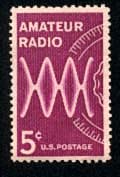
National or international organizations
concerning radio operator amateurism
International Telecommunication Union (UIT)
The ITU is the International Telecommunication Union, this organization installed in Geneva manages the whole radioelectric spectrum and proposes the ranges of frequencies to be allocated to the various services users.
The radio operator amateurs are a service user with whole rights, but the national administrations are however only judges in fine of the frequencies to be allotted to their nationals, so certain differences from one country to another.
Authority of Regulation of Telecommunications (ART)
ART is the organization which in France is managing the ham radio service; its decisions are published in the Official Journal of the French Republic, and are applicable for us.
It organizes the exam sessions for the passage of the ham licence.
Its adress is: ART Po Box 61 SUCY en Brie CEDEX France
Tel.: 01 45 95 33 00, Fax: 01 45 90 91 67
The Reseau des Emetteurs Francais (ref. Union)
The Reseau des emetteurs francais is the principal association gathering the French ham radios, it is normally consulted by ART on the great subjects of the emission of amateur, it conveys cards QSL to its nationals.
The International Amateur Radio operator Union (Iaru)
The IARU is the international association gathering representatives associations of the various countries; there may be only one representative association per country; in France, it is the Reseau des Emetteurs Francais.
The IARU, during its congresses
determine the internal rules of use in our bands; these
proposals, insofar as they do not contradict a national
regulation, are normally applied by national associations which
announce them to their members.
The Amateur Radio repeater League (ARRL)
It is the principal association gathering the ham radios in the United States.
For those which do not know the emission of amateur, see:
Frequency bands propagation types of modulations types of traffic
Return to the welcomme page
© 1999-2011 A. Ducros F5AD